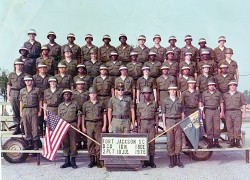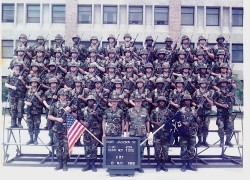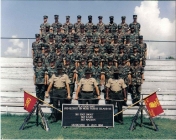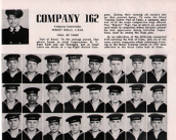Specialty Summary. Operates airborne operations mission equipment, systems, electro-optical sensor systems, and electronic protection (EP) equipment. Gathers, records, displays, and distributes mission information. Interprets computer-generated displays and alarms. Performs and assists in mission planning. Maintains publications and currency items. Maintains communications nets with ground, air, and maritime units. Performs airborne operations functions under training and operational conditions. Manages, supervises, trains, provides expertise, and evaluates activities. Performs staff functions. Promotes and instills situational awareness in all aspects of airborne operations. Related DoD Occupational Subgroup: 122100.
Duties and Responsibilities: Operates airborne operations mission equipment. Performs mission planning, preflight, in-flight, and post flight duties according to aircraft technical orders and applicable Air Force Instructions (AFIs). Identifies and maintains surveillance of air, ground, and maritime objects. Interprets computer-generated displays, data, and alarms, and takes appropriate switch actions. Compares track positions with flight data and database files to determine track identification.
Gathers, displays, records, and distributes operational mission information. Gathers mission data on ground, air, and maritime objects, and relays data to using agencies. Displays sensor, mission, identification, weather, and other data for battle managers. Updates mission data to tabular displays. Records and reports special interest tracks mission information, weather, emergency signals, and electronic attack (EA) observations. Reviews and reports equipment status and performance. Maintains logs, forms, and database files.
Performs electronic-protection (EP) functions. Uses EP techniques to degrade effectiveness of electronic warfare activities or other external interference. Recommends procedures and techniques to improve EP effectiveness. Configures equipment to eliminate or reduce the effects of EA. Maintains coordination with exterior agencies.
Maintains status of air and ground activity. Coordinates with and supports other airborne and ground platforms in distributing and relaying operational target and identification data. Monitors radio communications. Coordinates mission profile requirements with internal and external agencies.
Reacts to manual and computer-generated console situation and tabular displays to determine optimum airborne equipment settings. Evaluates aircrew academic, simulation, in-flight performances, and systems capabilities, and recommends improvements. Coordinates with airborne, ground, and maritime agencies in distributing and relaying operational threat and identification data. Receives, transmits, and relays encoded and decoded messages from ground command and control agencies. Determines data link requirements. Formats initialization data.
Supervises and performs Gunship Sensor Operator Duties. Conducts unconventional/conventional warfare and special operations missions to include close air support, interdiction, armed reconnaissance, combat search and rescue, and limited forward air control. Preflights, operates, limited in-flight trouble-shooting and repair, and post flights AC-130H/U gunship sensor detection systems. Monitors radio communications. Determines disposition and locations of hostile and/or friendly forces by studying available intelligence data. Positions the aircraft using sensor systems to detect, acquire, identify, and track enemy and/or friendly forces. Fires gunship weapon systems during combat missions to ensure desired level of target destruction. Performs real-time battle damage assessment and operates all mission video/audio recording equipment.
Instructs, evaluates, and supervises airborne operations system activities. Conducts training for airborne operations systems personnel. Develops and reviews instructional methods and procedures used in Initial Qualification Training (IQT), Upgrade Training (UGT), and Continuation Training (CT). Reviews training status and recommends remedial training. Evaluates aircrew academic, simulation, and in-flight performances. Reviews trend analysis of flight evaluations to identify training deficiencies. Supervises subordinates during the performance of their duties. Reviews training status and arranges additional, remedial, and continuation training. Conducts periodic inspections of aircrew operations and unit activities.
Performs staff functions. Performs staff duties at squadron level and above where aircrew command and control, and gunship sensor operator expertise is required.
Plans and organizes airborne command and control systems apprentice/journeyman/craftsman activities. Develops and improves methods of personnel utilization and aircrew operations economy. Advises commanders and staff officers of important changes and developments in the mission operations area. Identifies problems affecting the capability and
efficiency of unit operations. Facilitates planning, organizing, and executing operational and training missions. Revises personnel distribution within assigned mission functions. Determines mission requirements and recommends operational procedures to meet worldwide contingency and operational tasking. Reviews trend analysis of flight evaluations to identify training deficiencies. Identifies and corrects faulty operational techniques.
Specialty Qualifications:
Knowledge. Knowledge is mandatory of: active and passive airborne sensor systems fundamentals; electro-optical sensor theory; characteristics and limitation of airborne battle management, surveillance, mission systems and gunship operations; target detection, recognition, identification, and tracking capabilities; computer-generated console situation and tabular displays, electronic generated data, ATO, SPINS, and fire support annex; receiving, recording, and relaying operational threat data; identification procedures and techniques; EA and EP or ESM functions; data link requirements; communications systems; emergency procedures and equipment; maintaining publications; emergency action procedures; and command or theater battle management activities.
Education. For entry into this specialty, completion of high school or general educational development equivalency is mandatory.
Training. For award of AFSC 1A431, completion of the Airborne Battle Management Systems course is mandatory.
Experience. The following experience is mandatory for award of the AFSC indicated:
1A451. Qualification in and possession of AFSC 1A431. Experience in functions such as target detecting, tracking, reporting target information or receiving, displaying, recording, and relaying threat command, control, and intelligence data from airborne battle management system functions and activities.
1A471. Qualification in and possession of AFSC 1A451. Also, experience performing or supervising, or airborne battle management system functions and activities.
1A491. Qualification in and possession of AFSC 1A471. Experience in managing airborne battle management systems or gunship sensor systems activities.
Other. The following are mandatory as indicated:
See attachment 4 for other entry requirements. For entry, award, and retention of AFSCs 1A4X1: Physical qualification for aircrew duty according to AFI 48-123, Medical Examinations and Standard, Class III medical standards. Qualification for aviation service according to AFI 11-402, Aviation and Parachutist Service, Aeronautical Ratings and Badges. For entry, award, and retention of these AFSCs, must maintain eligibility to deploy and mobilize worldwide. Specialty requires routine access to Secret material or similar environment. For award and retention of AFSCs 1A4XX, completion of a current National Agency Check, Local Agency Checks and Credit (NACLC) according to AFI 31‑501, Personnel Security Program Management. NOTE: Award of the 3-skill level without a completed NACLC is authorized provided an interim Secret security clearance has been granted according to AFI 31-501.




